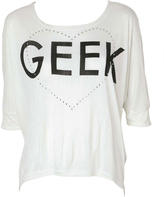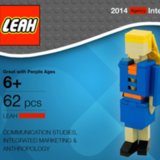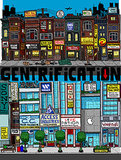Project Spark on Xbox One
With Microsoft's Project Spark, Anyone Can Build a Video Game
We proudly present this article from our partners at ReadWrite.
By Taylor Hatmaker
![]()
Microsoft wants gamers build their own worlds — playable game worlds, in fact. Microsoft's Project Spark, in open beta now for Windows 8 and the Xbox One, splices together a Minecraft-like sandbox with actual developer tools, enabling budding game makers to actually build a playable game from scratch with no technical know-how whatsoever.

In other words, everyone likes to build stuff. So let's give everyone a shot, why don't we?
Developed by Team Dakota and published by Microsoft Studios, Project Spark empowers anyone (with the right hardware) to weave the sprawling interactive video game of their dreams. It doesn't matter if you're 12 years old or if you've never written a line of code in your life. Pour your imagination into Project Spark and see what happens. Awesome.
Pinning Down Project Spark
So what is it exactly? Having spent a solid chunk of hours with the "game" on Xbox One, that's still a little tricky to answer. According to an early post from the Xbox Blog:
"Project Spark" is an open-world digital canvas that enables anyone to build, play, and share whatever they can imagine. It's a powerful, yet simple way to build and play your own worlds, stories and games. Share all of your creations to a dynamic community, and play what the community makes.
That definition is on, if a bit abstract. Rather than a game-within-a-game, Project Spark is sort of a game without a game. Much like Minecraft (and the ensuing tidal wave of Minecraft-inspired titles), Project Spark is about world building.
It's an imaginative hybrid experience combining a traditional, more technical developer kit (think lines of code) with a graphical interface that plays like a game itself (think elves and goblins). The result is "user-friendly" but not by any means simple — unless you want it to be, of course.
Make your terrain (and paint it too). Make your terrain (and paint it too).
Step One: Choose an Elf, Duh
Getting started with Project Spark — for the nondevs among us, anyway — begins with a fast-paced tutorial teaching you the basics of programming your very own little world. You'll choose a character, a generic foresty-type elf in my case, and learn to build conditional rules to govern gameplay mechanics.
Framed as "when x, do y," these conditions let you program your elf to shoot a fireball when you press the A button, for example. Anything you choose to place in your game world acts as a prop awaiting your command, which you issue down through a clever system called the "brain editor."

It's simple enough so that a kid (think age 10 and up) could get the hang of it — and complex enough to keep a budding game developer plenty busy. For programming n00bs, the act of opening up a thing's brain and tinkering around is a perfect visual way to represent the conditional statements that make everything in the coding world tick.
Step Two: Whoa, I Think I Just Coded
Adding on more conditions to be met means these rule sets can gets a lot more complicated if you want them to. By the time I had placed objects in my world (a goblin, the elf, a tree, a flag), sculpted the terrain, SimCity-style, and strung together enough rules to make a very basic game, I'd barely dipped my toes in what Project Spark makes possible.
Yet I'd already learned enough to keep me busy for hours on end. Project Spark's world isn't infinitely configurable — it could add more visual styles or more choice of a fearless protagonist, say — but if you want to go deep, you certainly can. I don't even know how deep, but I'd venture to guess "way." And since it's an online game, it can deepen considerably over time.
Flipping from the editor mode — wherein you build your world, populate it with props, program their "brains" and so on — to the test mode allows you to play the game you've made to see if it works. Content with my progress, I switched to the live test mode. My entire world was a tiny island with the sole objective of navigating the elf (my character) to a flag on top of a mountain. OK, it was more of a hill.
When I'd finished up with that, the tutorial launched into how to craft a screen showing that you'd met the objective (mine said "yay"). Then it began showing me how to add timer elements into the mix, so that if my elf had dawdled, we might have failed to reach the flag in time and met an unspeakable demise of my choosing.
That's when my own brain exploded: I'd just built a level. As a life-long gamer with no development skills to speak of, I felt things click into place — and it felt rad. Imagining a young gamer experiencing that same kind of gestalt is a powerful thing indeed.
Step 3: Build, Play, Build Deeper
Project Spark is more than a graphical game maker, it's a community. Make something you're proud of and other gamers can jump right in and play it. Naturally, you can return the favor, right from the app. There's no talk of allowing developers to turn their hit Project Spark games into commercial properties, but it's on the table in the future.
As Team Dakota's studio manager Michael "Saxs" Persson told The Verge: "This is about the other 99 percent who just love games and want to have some fun creating and sharing, from kids with no experience and are just fooling around, all the way up to budding game creators."
Beyond being a powerful educational platform for visual programming, Project Spark is a wise move to court the indie community on Microsoft's part. Months before the launch of the PlayStation 4 and Xbox One, Sony was looking like a friendlier home to indie gameplay and development. Microsoft has made some major efforts to shift that image.
Diversifying the Playing Field
In an industry that looks like a meritocracy to anyone peering down from the top, it's literally unimaginable to envision the experiences a more culturally, racially and gender-diverse body of creators could yield. Stoking interest in coding and spreading access to even casual programming tools is critical to technology's much-needed infusion of diversity. Video games, Project Spark demonstrates, could prove extremely potent for the former.
Indie gaming's meteoric rise, not-coincidentally concurrent with the explosion of the app as a distribution model, showed that the little guy can pack a punch if you give one a shot in the ring, or the App Store. Now experiments like Project Spark show how a new wave of imaginative, incognito, youth-friendly programming tools could democratize development skills themselves — and that's a major 1up.
Related Links
How to prevent people from tagging you on Twitter
The next Disney star will be from YouTube
What you need to know about Microsoft Office
How LittleBits turned hardware into hackable code
The Facebook Oculus deal could be amazing or terrifying
Source: Microsoft Xbox





















































































